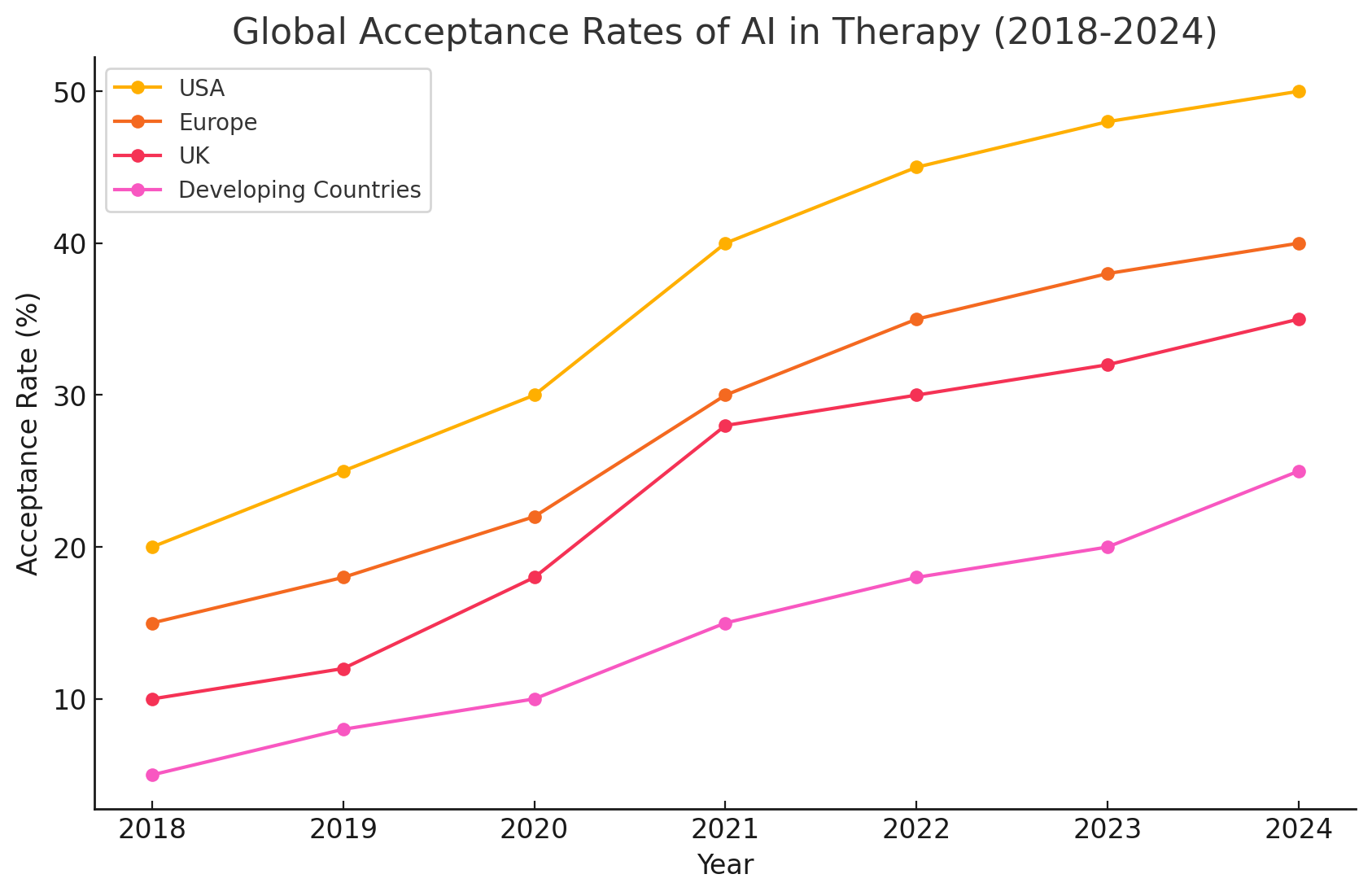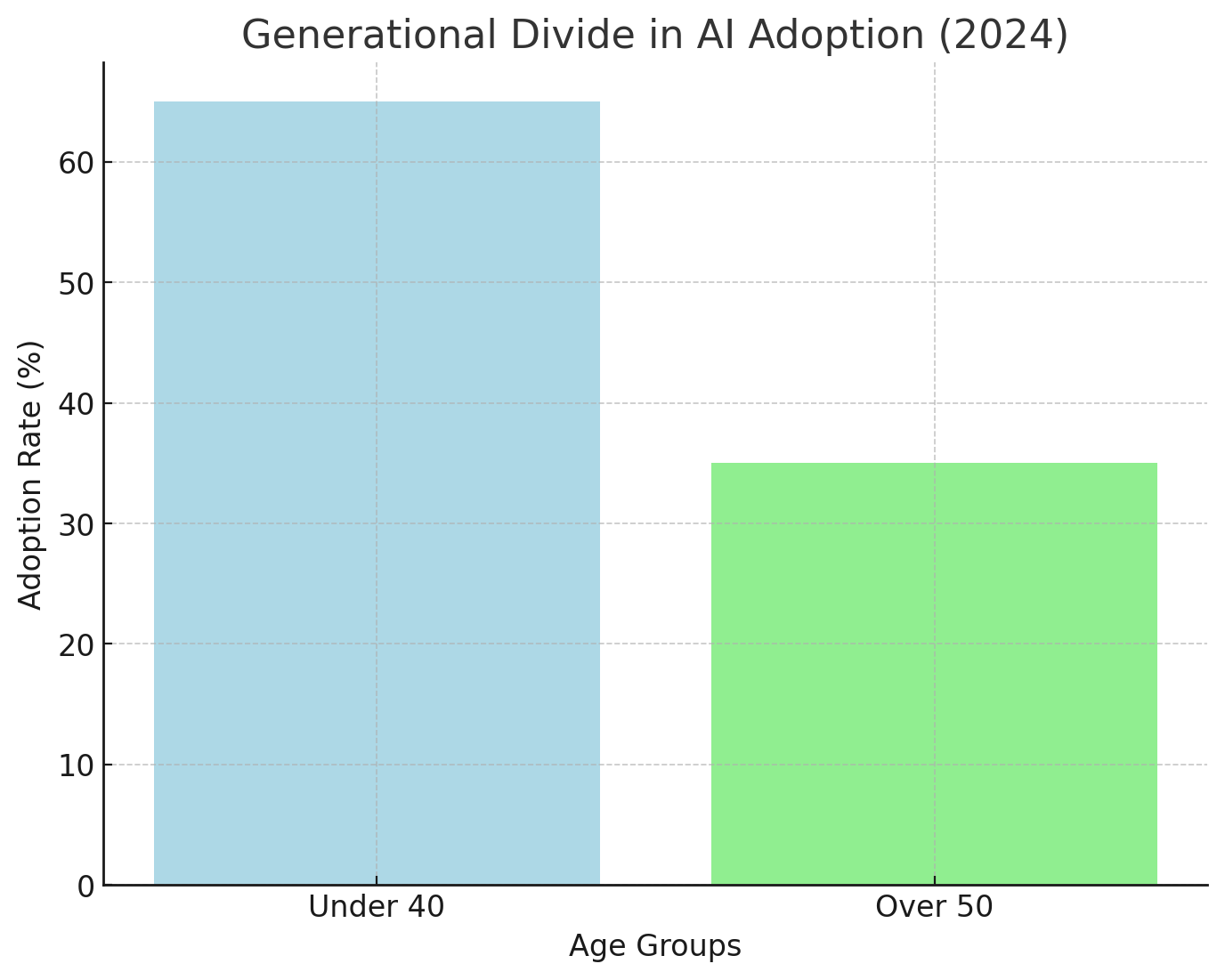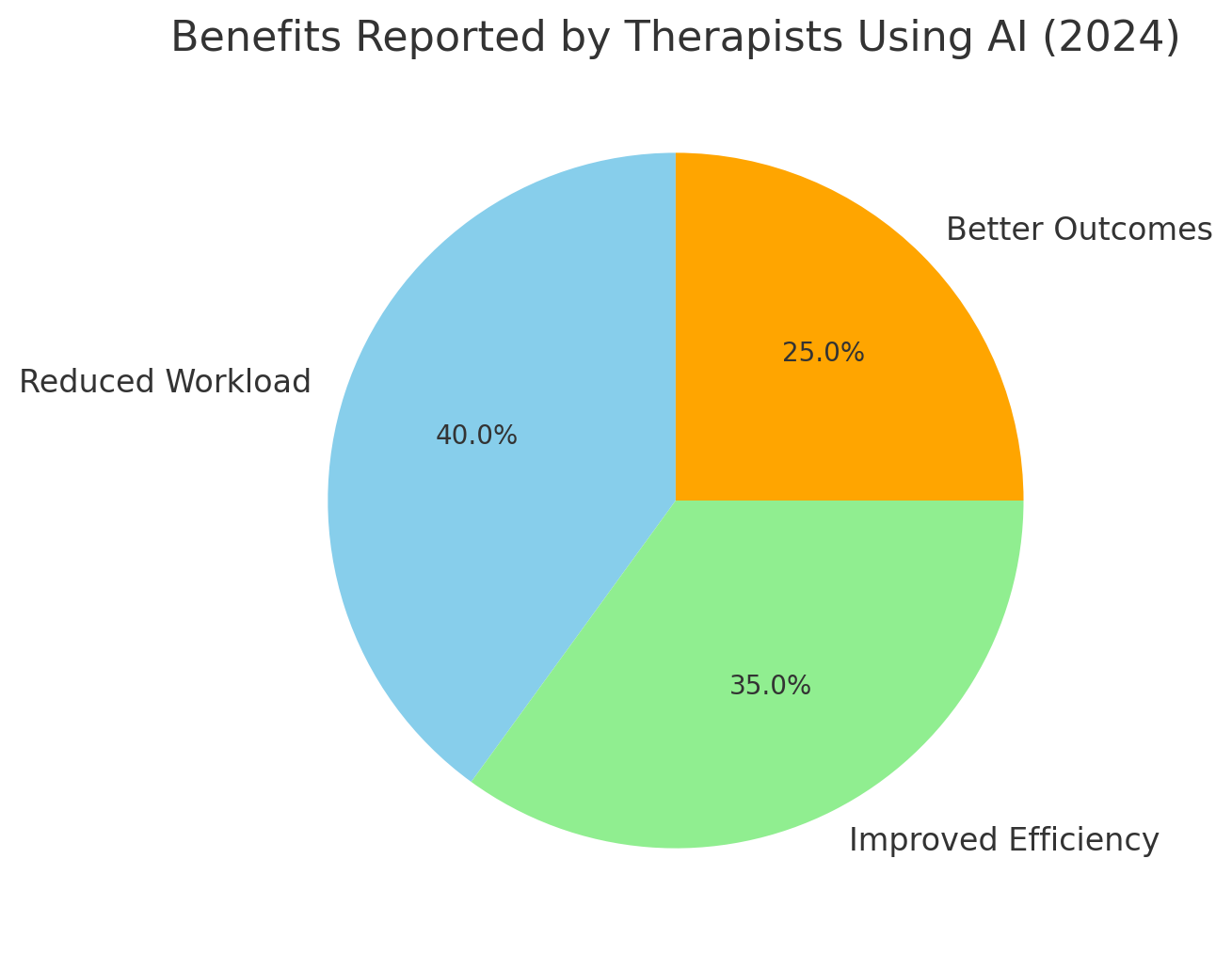Introduction
The integration of AI into therapy has been met with a mix of enthusiasm and resistance among mental health professionals. While some therapists embrace AI as a tool to enhance their practices, others view it with skepticism, fearing it may undermine the human connection central to therapy. This article delves into therapists' attitudes toward AI, acceptance rates, regional differences, the risks of rejecting or embracing AI, and the transformative potential of this technology.
Key Data and Trends
Global Acceptance Rates
- USA: 50% of therapists have incorporated AI tools into their practice.
- Europe: 35% adoption among therapists.
- UK: 30% of therapists now use AI.
- Developing Countries: Only 15% adoption rate due to technological limitations.
- Growth: Acceptance rates have grown steadily since 2018, with a global average increase of 20%.
Regional Resistance
- UK: 40% of therapists worry about AI compromising the empathetic nature of therapy.
- USA: 25% of therapists express similar concerns.
- Europe: 50% resistance among therapists.
- Developing Countries: Higher resistance due to lack of access and training.
Impact on Practices
- Efficiency: 60% improvement in administrative workflows for therapists using AI.
- Insights: 35% of European therapists found AI helpful for analyzing client data and suggesting interventions.
Generational Divide
- Under 40: 65% adoption rate among younger therapists in the USA.
- Over 50: Adoption rates are significantly lower, around 35% globally.
Visualizing the Data
1. Global Acceptance Rates of AI by Region (2018-2024)
A line graph illustrating the growth in AI adoption rates across the USA, Europe, UK, and developing countries shows a steady upward trend since 2018. Notably, the USA leads with 50% of therapists incorporating AI into their practice by 2024, while developing countries lag at 15% due to limited resources. This growth reflects increasing confidence in AI’s ability to enhance therapy.

2. Generational Divide in AI Adoption (2024)
A bar chart comparing AI adoption rates among therapists under 40 and over 50 globally highlights a significant generational gap. Younger therapists have a 65% adoption rate, more than double that of their older counterparts at 35%. This disparity underscores the need for targeted training programs to address skepticism among older professionals.

3. Benefits Reported by Therapists Using AI (2024)
A pie chart showing the percentage of therapists reporting benefits of AI reveals that 40% cite reduced workload, 35% improved efficiency, and 25% better client outcomes. These figures emphasize AI’s potential to enhance the therapeutic process, enabling professionals to focus more on client care.

Real Stories: How AI is Changing Therapy
Story 1: Embracing AI for Better Outcomes
Dr. Linda, a therapist in New York, was initially skeptical about using AI. "I thought it would make therapy impersonal," she said. However, after integrating AI tools to streamline session notes and suggest evidence-based interventions, she found that her clients were progressing faster. "Now, I can focus entirely on my clients during sessions instead of worrying about documentation."
Story 2: The Risks of Resistance
In contrast, Sarah, a therapist in London, avoided AI tools, fearing they would replace her role. Over time, she noticed clients opting for platforms that offered both human and AI support. "I realized I was losing clients not because AI replaced me but because it complemented other therapists," she admitted.
Insights and Implications
Risks of Rejecting AI:
- Therapists who resist AI may fall behind, losing clients to professionals who offer tech-integrated services.
- Limited adoption could perpetuate accessibility gaps, particularly in underserved regions.
Benefits of Embracing AI:
- Therapists using AI report greater job satisfaction and less burnout.
- AI enables more personalized care by providing data-driven insights and continuous client engagement.
Future Directions:
The demand for tech-savvy therapists is growing, with clients increasingly expecting a hybrid model of AI and human care. Training programs must address resistance by demonstrating how AI complements rather than replaces therapists.
Take the Leap with AI in Therapy
Therapists, the choice is clear: embrace AI to enhance your practice and meet the evolving needs of clients. Join Talk Therapy and be part of the movement shaping the future of mental health care. Sign up here to start transforming lives with the power of AI.
Sources
- Journal of Medical Internet Research: www.jmir.org
- Stanford University Research: www.stanford.edu
- Zion Market Research: www.zionmarketresearch.com
- Open Access Government: www.openaccessgovernment.org
Search
- Type here to search
-b2zovs38.jpg)

